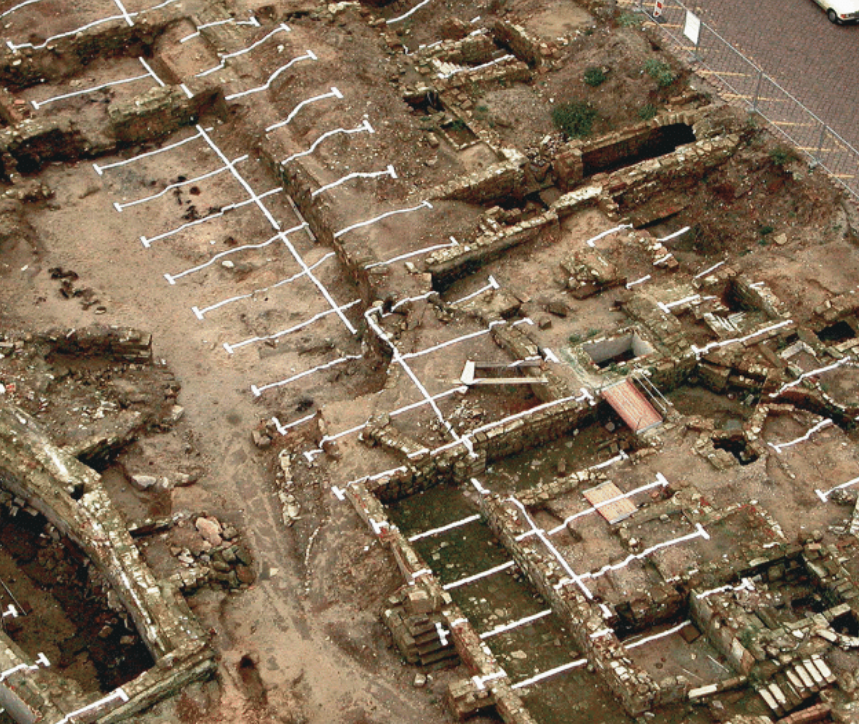Jahna Dahms Car park: The hidden beauty of historical layers
The project resulted from an examination of the archaeological hypothesis that an ancient settlement with a Bronze Age cult site could have been located in the heart of Dresden before the city was actually founded. This gave rise to the idea that the site of Dresden’s Frauenkirche was not only the historical, but possibly also the spiritual starting point of the settlement, which could explain the great desire to rebuild the Frauenkirche, even though there was no congregation for this church at the time.
In order to pursue this idea and to better understand the site, a thorough survey was carried out. This revealed an unusual distance between the marker lines on a car park.
Archaeological excavations in 2001/2002 confirmed the existence of the oldest church and the Bronze Age settlement and uncovered settlement and building layers from almost all subsequent centuries. With the support of the State Office for Archaeology of Saxony, it was possible to develop an astonishing correspondence between the wall crowns of different centuries and the structure of the Bronze Age burial ground with the marking lines of the car park as an artistic correspondence hypothesis.
In collaboration with the Saxon State Office for Archaeology and the investor Arturo Prisco, it was possible to reconstruct the marking lines of the car park on the excavation area.
The large-format, planimetric drawing not only superimposes the ground structure of the excavation, but also the differences in height of the wall tops of up to 8 metres.
The artistic work shows an extraordinary congruence between the historical layout of the site and the car park, which has been repeated over the centuries. From a bird’s eye view, the fascinating congruence of different historical layers in the excavation plan became visible. The drawing conveys the genius loci of the site and offers the fascinating beauty of historical continuity.

